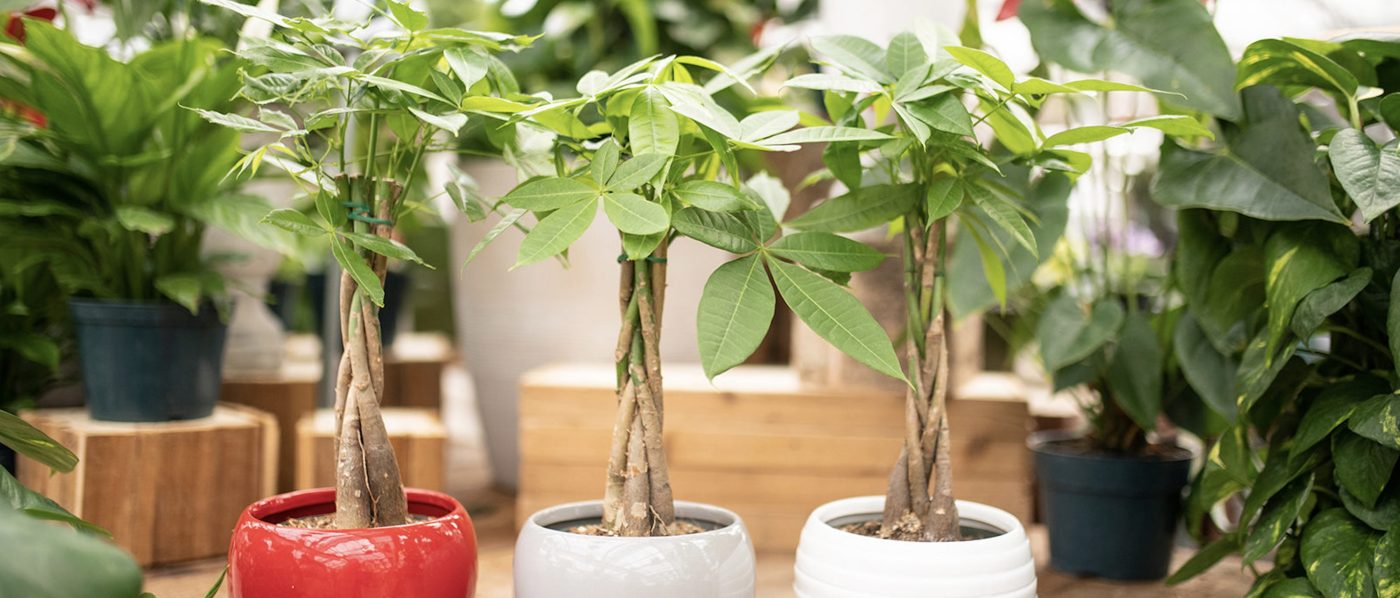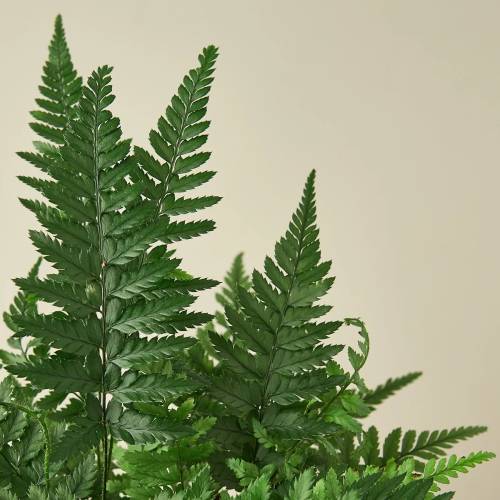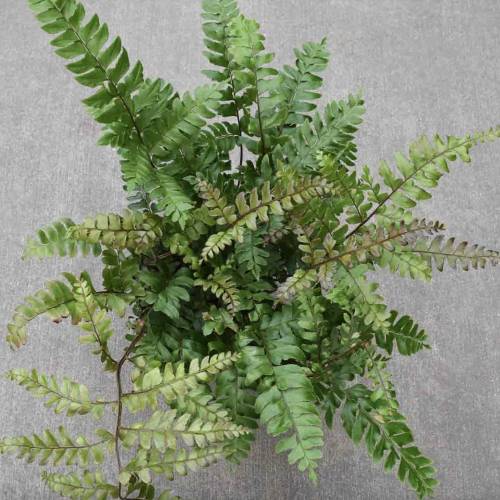Ferns, an ancient and diverse group of plants, enchant with their delicate fronds and lush greenery. This comprehensive care guide is your passport to cultivating the green splendor of ferns, transforming your indoor or outdoor space into a haven of graceful foliage.
I. Plant Overview:
- Scientific Name: Varies by species (e.g., Nephrolepis, Adiantum, Asplenium)
- Common Names: Ferns
- Origin: Ubiquitous, found in various climates globally.
II. Light Requirements:
- Ideal Conditions: Indirect or filtered light. Ferns prefer dappled sunlight in natural environments.
- Tolerance: Adaptable to lower light conditions, but avoid prolonged exposure to direct sunlight.
III. Watering:
- Frequency: Keep the soil consistently moist. Water when the top inch feels slightly dry.
- Water Quality: Use room-temperature water. Ensure proper drainage to prevent waterlogged conditions.
- Humidity: Ferns thrive in higher humidity. Regular misting or a humidity tray can be beneficial.
IV. Soil:
- Type: Well-draining potting mix. A blend for ferns or orchids with added organic matter is suitable.
- pH Level: Slightly acidic to neutral (pH 5.5-7.0).
V. Temperature and Humidity:
- Temperature: Maintain a cool to moderate environment, between 60-75°F (15-24°C).
- Humidity: Ferns appreciate higher humidity levels. Adequate air circulation is essential.
VI. Fertilization:
- Schedule: Feed every 4-6 weeks during the growing season (spring and summer).
- Fertilizer: Use a balanced liquid fertilizer, diluted to half strength. Reduce fertilization in the dormant season.
VII. Pruning and Maintenance:
- Pruning: Trim brown or yellow fronds close to the base. Remove any debris or dead material.
- Cleaning: Wipe leaves with a damp cloth to remove dust. Keep the plant tidy for optimal visual appeal.
VIII. Repotting:
- Frequency: Repot every 1-2 years or when the plant outgrows its container.
- Procedure: Gently lift the fern, inspect roots, and repot in fresh soil. Choose a container with drainage holes.
IX. Common Issues and Solutions:
- Brown Tips: Dry air or underwatering. Increase humidity and adjust watering habits.
- Pests: Check for scale or spider mites. Treat with insecticidal soap or neem oil.
- Yellowing Leaves: Overwatering or poor drainage. Adjust watering and ensure good soil drainage.
X. Propagation:
- Method: Spores, division, or offsets.
- Timing: Spring or early summer.
- Process: Collect spores or divide the plant at the roots. Plant in a well-draining mix and provide appropriate care.
Ferns, with their timeless beauty, elevate the leafy kingdom in any setting. This guide equips you to cultivate the green splendor of ferns, ensuring they thrive and enchant with their graceful fronds. Happy gardening!
our recommendation
you may also want to know









































